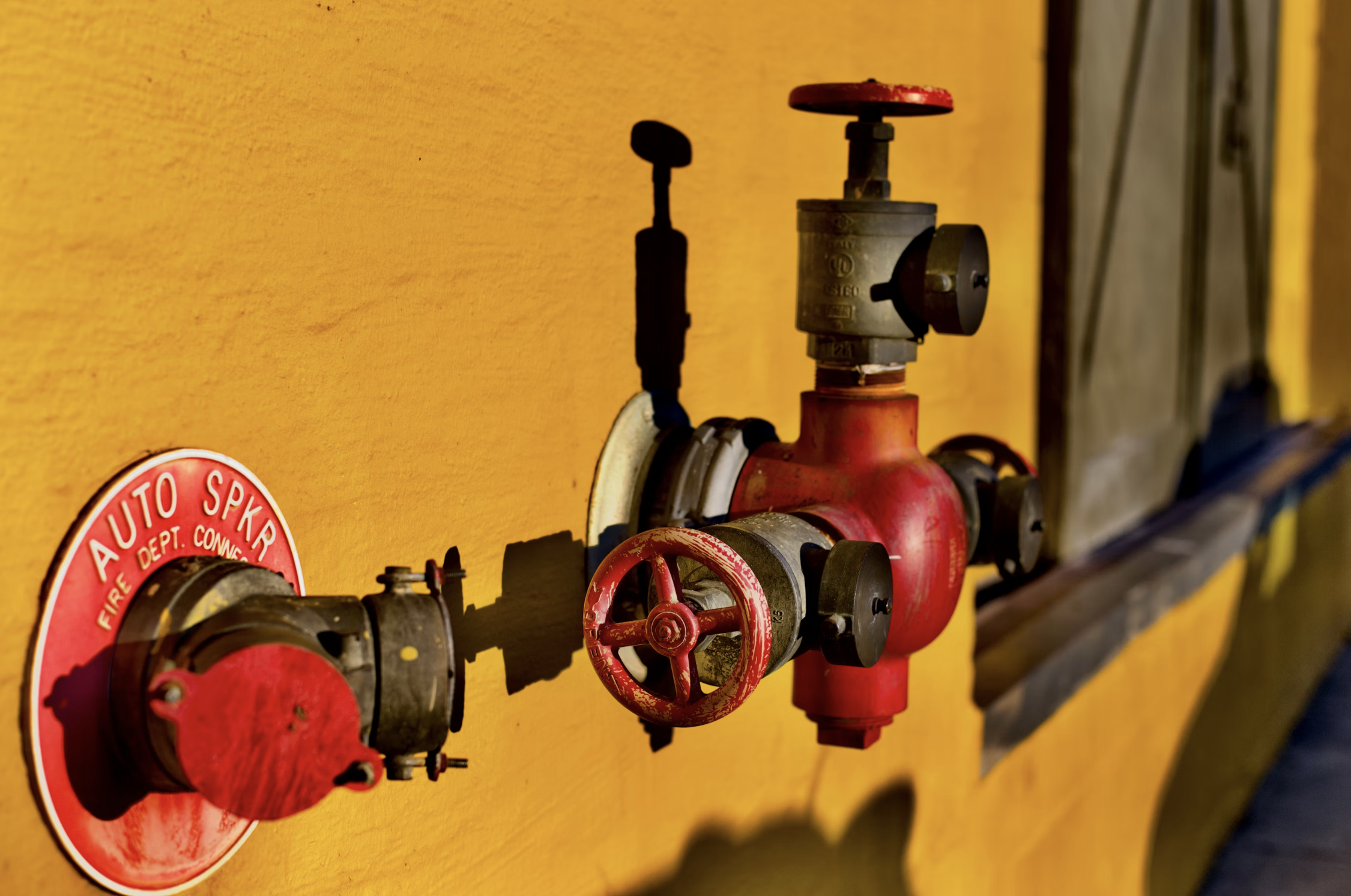
How Do Fire Sprinkler Systems Work?
Fire safety is a paramount concern for businesses across the country. A crucial element of any comprehensive fire safety strategy is a well-designed and properly maintained fire sprinkler system. These systems are not just a legal or insurance requirement; they are your first line of defense against devastating fires.
According to the National Fire Protection Association (NFPA), sprinkler systems confine fires to the object or room of origin 95% of the time, reducing civilian fire death rates by 89% and injury rates by 27% when present.
Below, we delve into how these lifesaving systems work and why they are essential for safeguarding your employees and assets.
Fire Sprinkler System Mechanics
Fire sprinkler systems are ingenious devices designed to detect and extinguish fires rapidly. They consist of a network of pipes connected to an outside water source and strategically placed sprinkler heads.
While there are many different types of fire sprinkler systems, the most common are:
Wet sprinkler systems
Wet systems are the most common type of sprinkler system. Water is constantly present within the pipes of a wet system and is ready to flow immediately upon sprinkler head activation.
Wet systems are typically used in areas where the ambient temperature stays above freezing, such as commercial buildings, offices, and residential structures.
Dry sprinkler systems
Dry systems use pressurized air or nitrogen instead of water in the pipes. A dry pipe valve holds back water until a fire triggers a sprinkler head. Once activated, the valve opens, allowing water to flow into the system and out of the sprinkler heads.
Dry systems are used where freezing temperatures are a concern, such as in unheated warehouses, garages, or attics.
Preaction sprinkler systems
Preaction systems are a combination of wet and dry systems. The pipes are filled with air, but there’s a preaction valve that controls the flow of water. The valve must be triggered by a separate detection system, such as heat or smoke detection before water is released into the pipes and discharged through the sprinkler heads.
Preaction systems are often used where accidental sprinkler activation would be especially problematic, such as museums, data centers, or libraries, providing an added layer of protection against false alarms.
How Do Fire Sprinkler Systems Work?
Step 1. Detection
The first step in the operation of a fire sprinkler system is detection. Early detection of a fire is crucial in preventing its escalation. Fire sprinkler systems typically incorporate various types of detectors, such as smoke and heat detectors. When these detectors sense the presence of smoke, heat, or flames, they send a signal to the control panel of the sprinkler system.
Modern fire sprinkler systems often use advanced technology, including electronic sensors and alarm systems. These sensors can pinpoint the location and intensity of a fire, providing valuable information to optimize the response.
Step 2. Sprinkler and alarm activation
Once the control panel receives the signal from the detectors, it triggers the activation of the fire sprinkler system. The activation process varies depending on the type of sprinkler system, but it typically involves opening a valve that allows water to flow into the sprinkler pipes.
It’s important to note that not all sprinklers activate simultaneously. Only the sprinklers closest to the fire’s source are activated, ensuring that water is directed precisely where needed. This targeted approach helps minimize water damage to unaffected areas of the building.
In addition to activating the sprinkler system, the control panel also triggers a fire alarm to alert occupants and emergency responders. This alarm can take various forms, such as sirens, horns, or strobe lights. The purpose of the alarm is to notify everyone in the building that a fire has been detected and that evacuation or other safety procedures should be initiated.
Step 3. Water discharge
With the activation of the sprinklers, pressurized water from the pipes is released. The water flows through the sprinkler heads and is sprayed over the fire. The sudden deluge of water serves two primary purposes: cooling the fire and reducing the concentration of heat and smoke.
By cooling the flames, the fire’s ability to spread is significantly hindered. This rapid response can often contain a fire until firefighters arrive on the scene, preventing it from growing out of control and potentially saving lives and property.
Protect Your Business With a Fire Sprinkler System
To ensure that your business is adequately protected from the devastating effects of fires, trust the experts at Kistler O’Brien Fire Protection. With decades of experience serving businesses in Pennsylvania, New Jersey, and Delaware, we are your local, trusted partner in fire safety.
Our team of professionals will assess your facility and select the most suitable fire sprinkler system to meet your specific needs and all regulatory requirements.
Contact Kistler O’Brien Fire Protection to protect your business from the devastating effects of fire.

